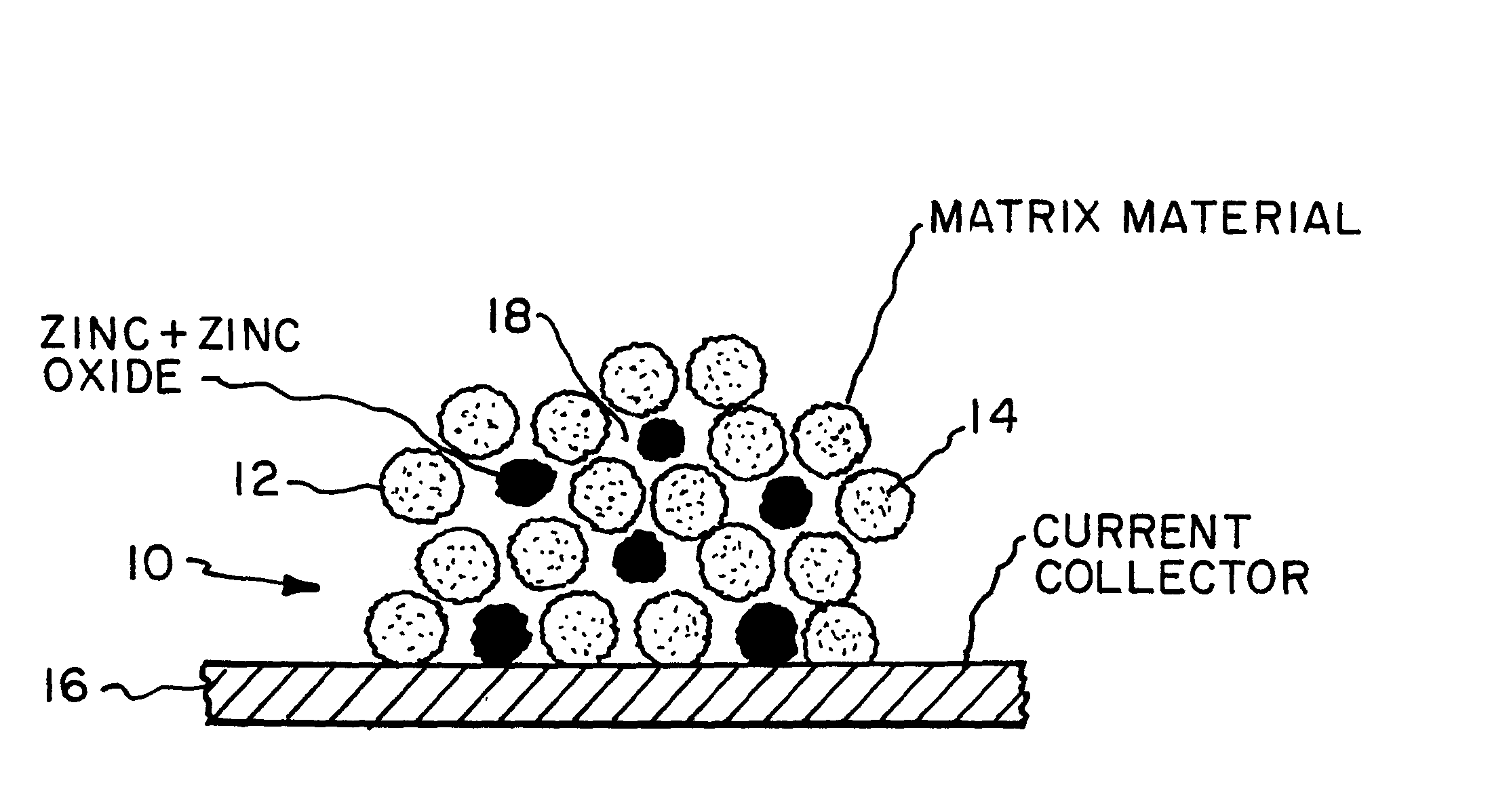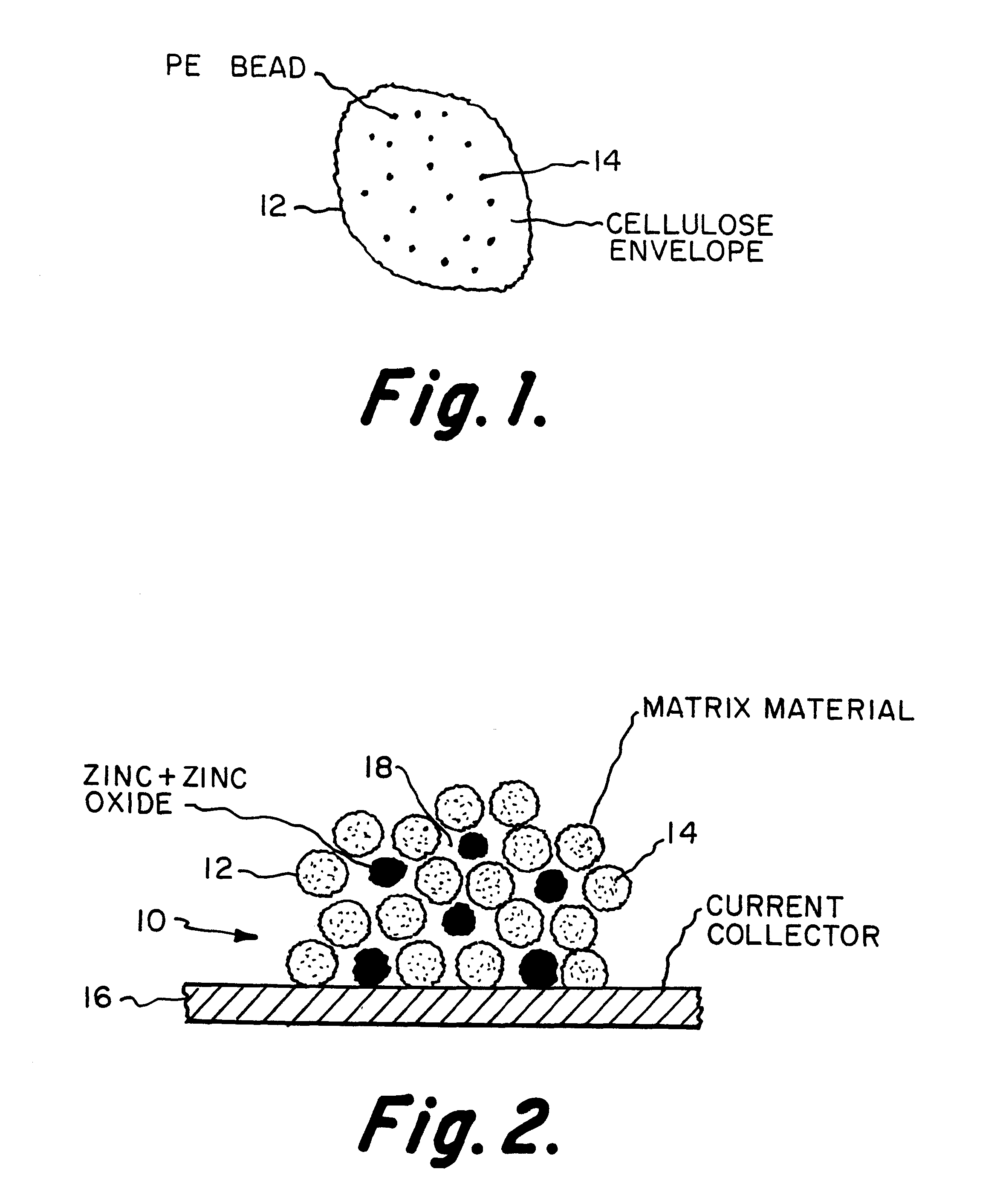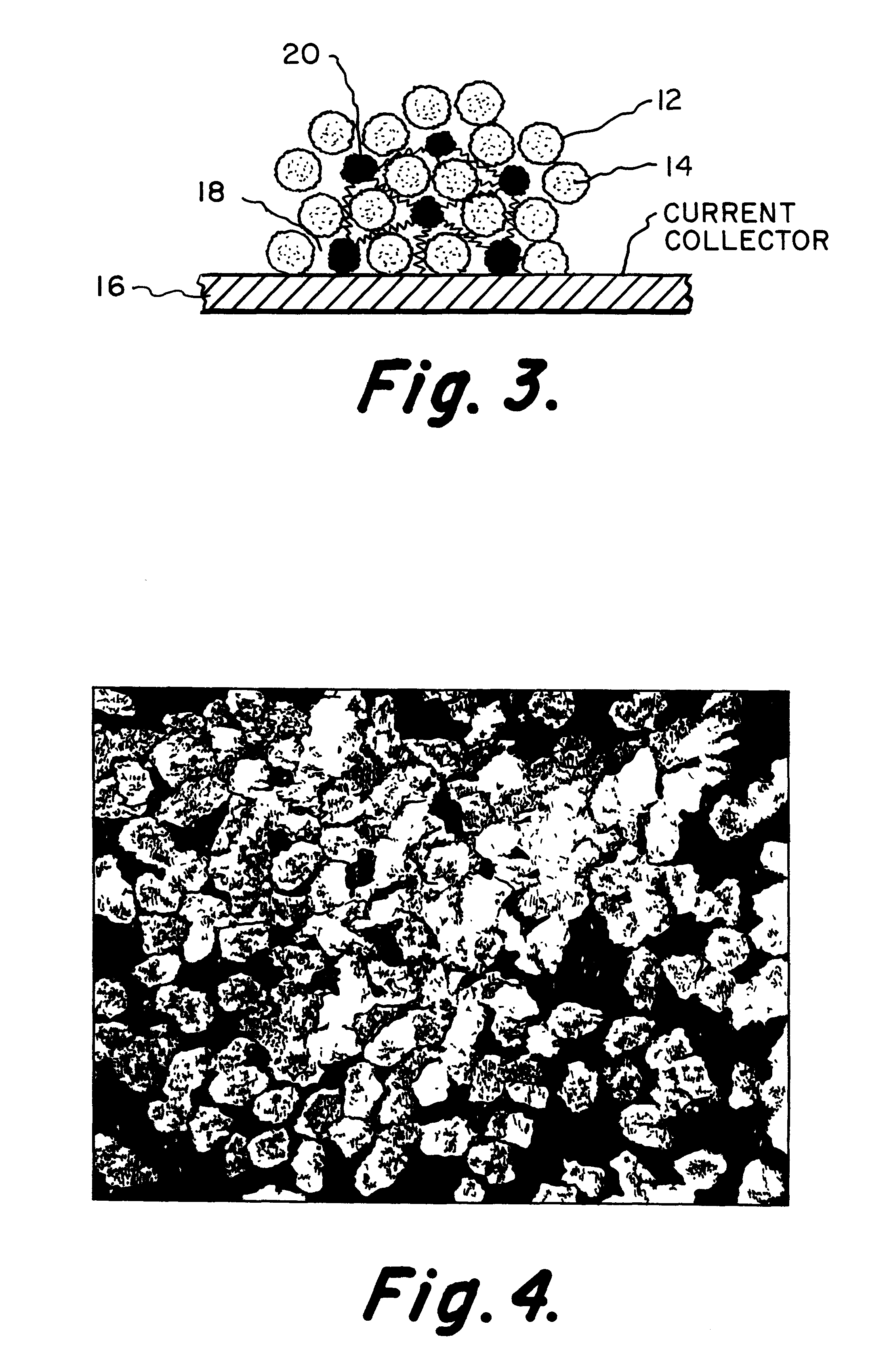Anode matrix
a technology of anode matrix and anode electrode, which is applied in the field of anode matrix, can solve the problems of limited cellulose accommodative capacity, achieve excellent accommodation to zinc density changes, high hydrogen transport, and high ionic transport
- Summary
- Abstract
- Description
- Claims
- Application Information
AI Technical Summary
Benefits of technology
Problems solved by technology
Method used
Image
Examples
example 2
40 grams of microcrystalline cellulose (MCC, Aldrich 31,069-7) is placed in a solution of 2 kg of 5% LiCl / DMAC and heated to 120 degrees Celsius for 15 minutes. The cooled solution affords a clear solution of MCC. The solution is reacted with 18 g of NaOH and 36 g diiododecane for 16 hours. 50 grams of ethyl cellulose (EC) is dissolved in 1000 ml DMAC separately. MCC and EC solutions are combined in a 2 / 1 weight ratio by dry polymer weight. 20 g of polyethylene beads (Quantum Inc.) are added. Material is then treated as in Example 1.
PUM
| Property | Measurement | Unit |
|---|---|---|
| semiconductive | aaaaa | aaaaa |
| hydrogen permeability | aaaaa | aaaaa |
| hydrogen permeable | aaaaa | aaaaa |
Abstract
Description
Claims
Application Information
 Login to View More
Login to View More - R&D
- Intellectual Property
- Life Sciences
- Materials
- Tech Scout
- Unparalleled Data Quality
- Higher Quality Content
- 60% Fewer Hallucinations
Browse by: Latest US Patents, China's latest patents, Technical Efficacy Thesaurus, Application Domain, Technology Topic, Popular Technical Reports.
© 2025 PatSnap. All rights reserved.Legal|Privacy policy|Modern Slavery Act Transparency Statement|Sitemap|About US| Contact US: help@patsnap.com



